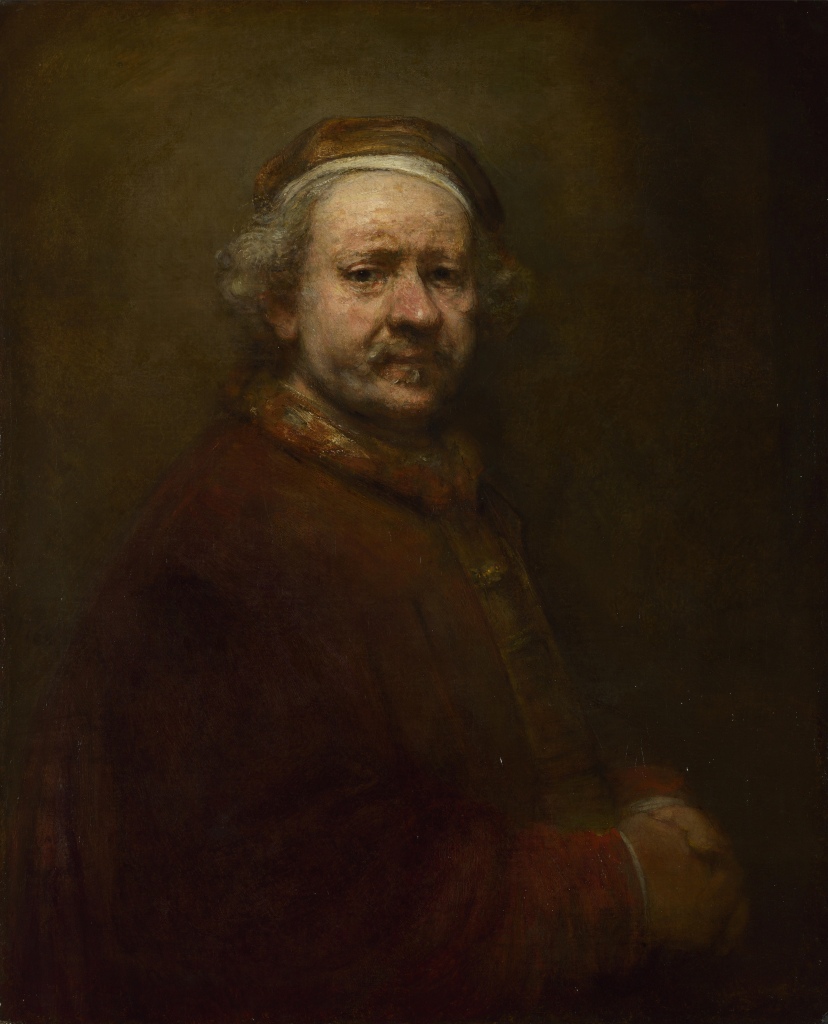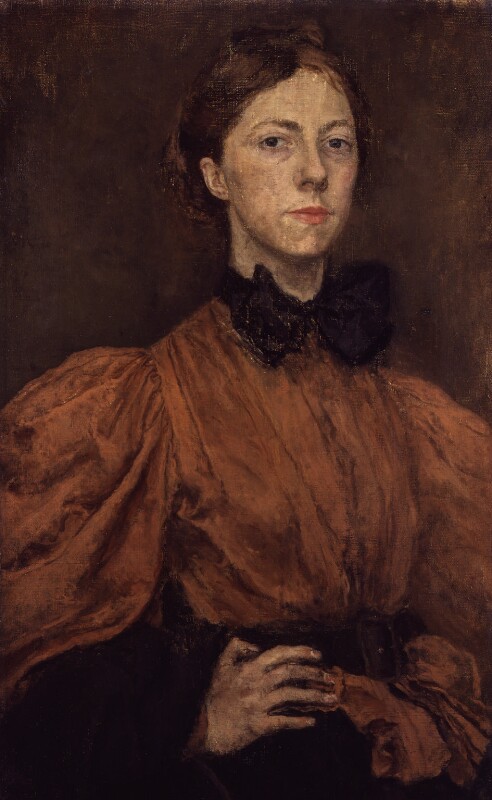Vulnerability
When I look at Rembrandt’s self-portraits, especially at those from the last decade of his life, I think about vulnerability. Not only did Rembrandt pioneer the art of self-inquiry and introspection, he also let himself be vulnerable with his audience. His self-portraits reveal the imperfections of old age with incredible clarity. The artist was painting his face in a way a diligent historian would describe an account of a battle – not a single little detail is left out, no redemption offered.

Rembrandt’s focus is almost always on his face, while the rest of the body is left in the shadow. At the time, the colour palette was probably considered quite innovative (read ‘unacceptable’). The textured surface of the skin reveals rough brushstrokes of green and red. This renders skin imperfect and far from flattering to the sitter. It’s so interesting to trace the movements of his brush when looking at the painting up close.
The self-portrait of the Welsh painter Gwen John (circa 1900) resembles stylistically Rembrandt but is far from showing any vulnerability. The artist looks confidently at the viewer with a mask-life face. It does not betray any feelings. Is it because that she, as a female artist, had to constantly prove herself to the art world as a worthy painter? You have to show toughness to be accepted as an equal in the ‘men’s world’. Maybe I’m going too far with my analysis… The colour palette, the atmosphere and the tone of the painting seems otherwise close to the one used by Rembrandt in his late self-portraits. Is it a coincidence or was she indeed influenced by the Dutch master?

by Gwendolen Mary (‘Gwen’) John
oil on canvas, circa 1900. National Portrait Gallery. Image source: http://www.npg.org.uk
Constructing identity
I cannot not mention Frida Kahlo when writing about self-portraiture. Her use of symbolic objects and emotionally-charged spaces leaves a lasting impression. I would dare to argue that imaginary scenery and external objects she brings in to construct her identity are at the center-point of her self-portraits and not, as it is conventional in self-portraiture, the artist’s body. Her body is deceptively present in her paintings while her mind seems to be wondering somewhere else. As it was written in the article by Google Arts and Culture, Frida Kahlo, in a way, constructed her identity through disability. Quite a few of the objects seen in her self-portraits are related to that. However, it might also be that critics read too much of her personal life into her work. By definition, self-portrait is a very personal exploration, but story-telling is almost as important, I believe.
And, finally, just recently, I came across photographic work of a South-African artist known as Tony Gum. She uses Kahlo’s imagery and applies it to her local context using objects symbolic to South African way of life. I haven’t decided yet what to think about her work, at least she doesn’t appropriate iconic imagery thoughtlessly. There is also something else – it definitely helped her to make a name for herself outside of South-Africa…
